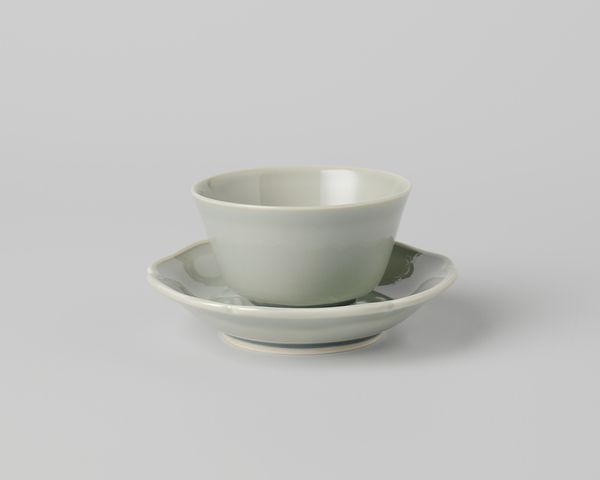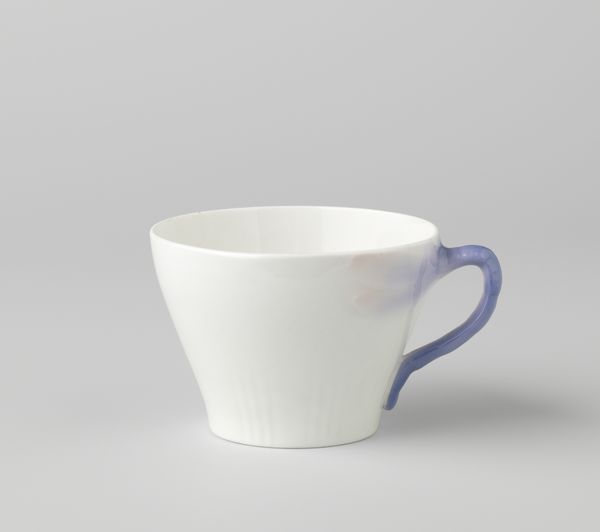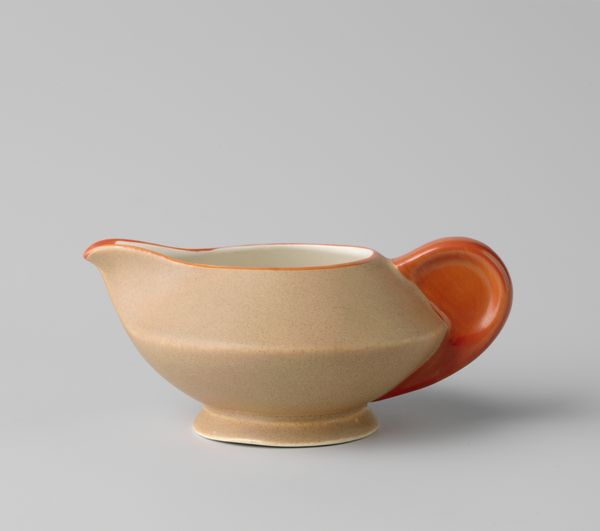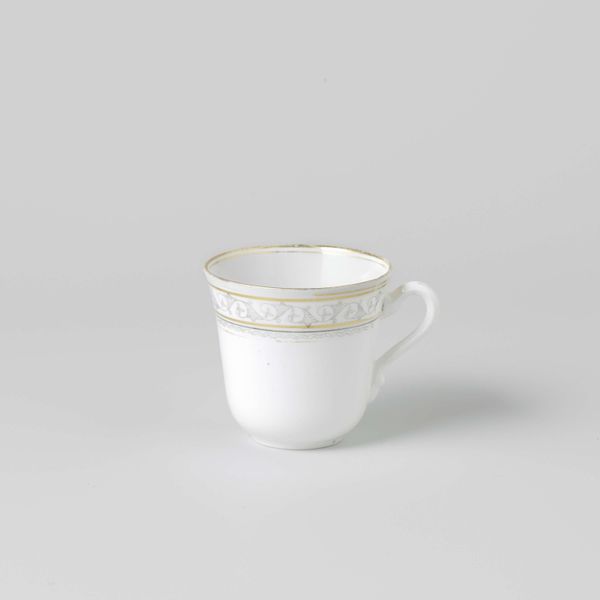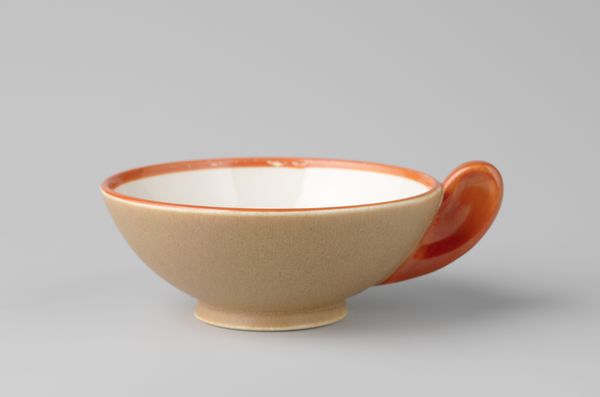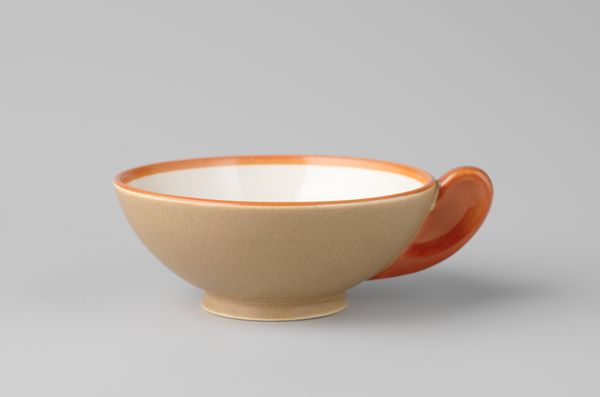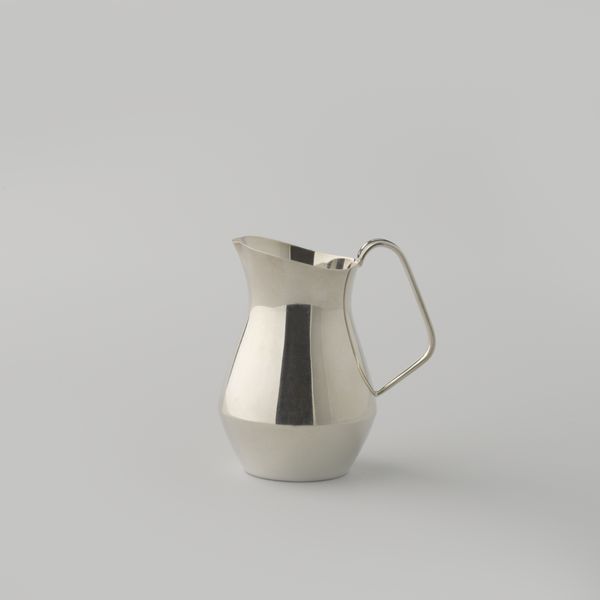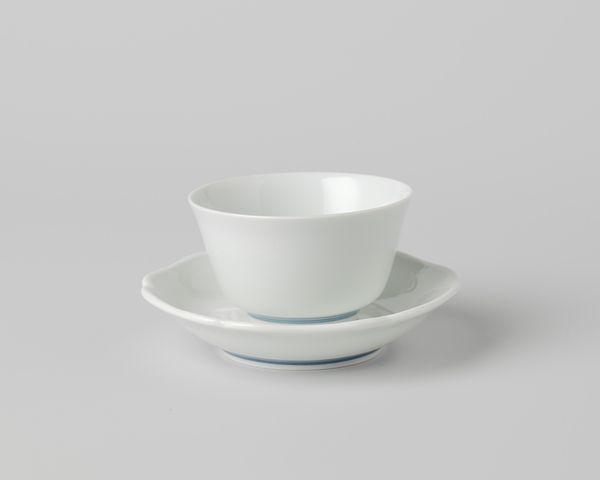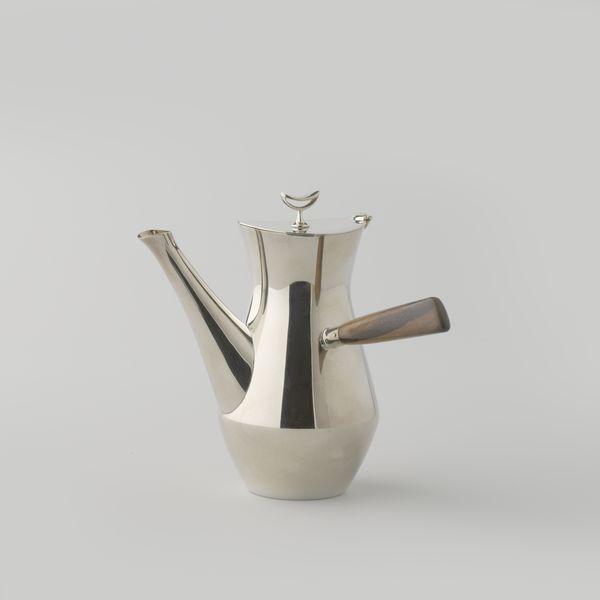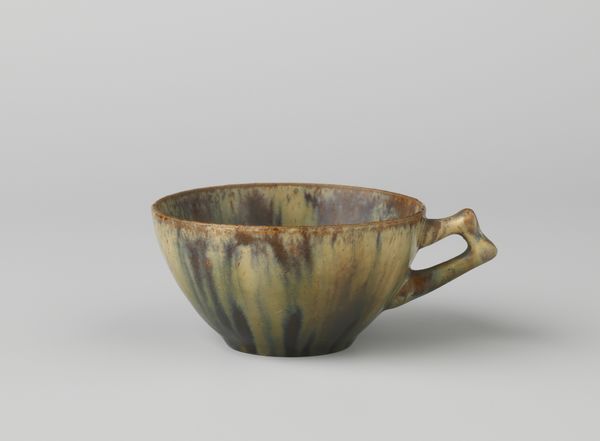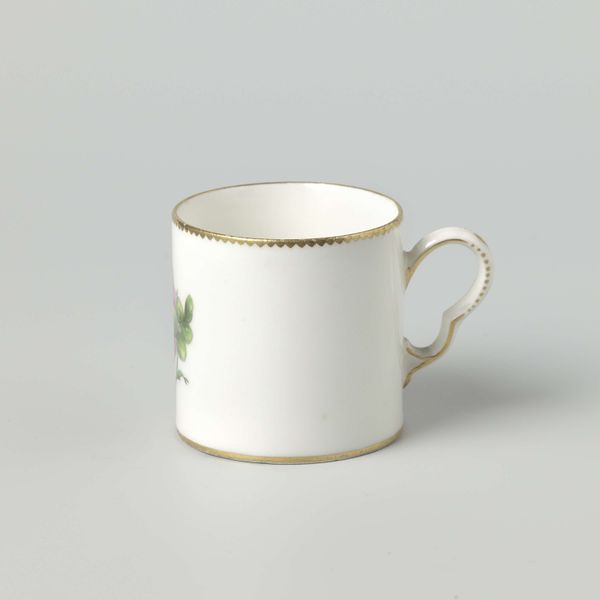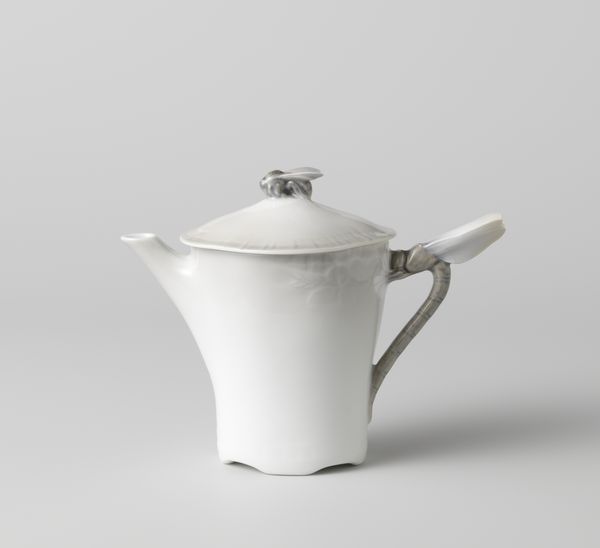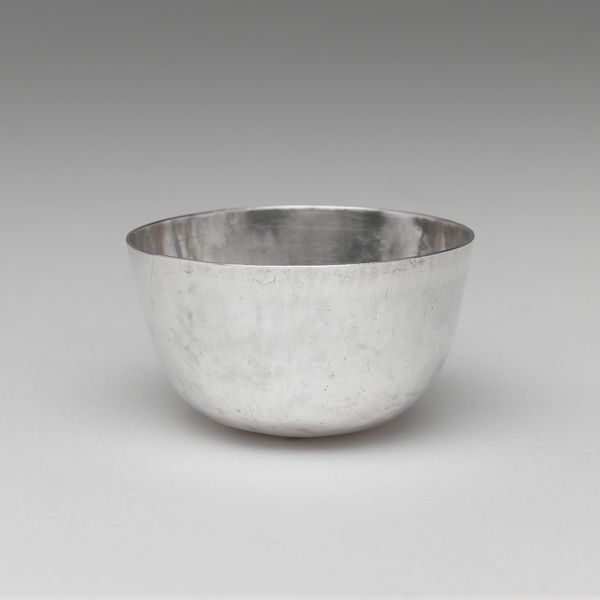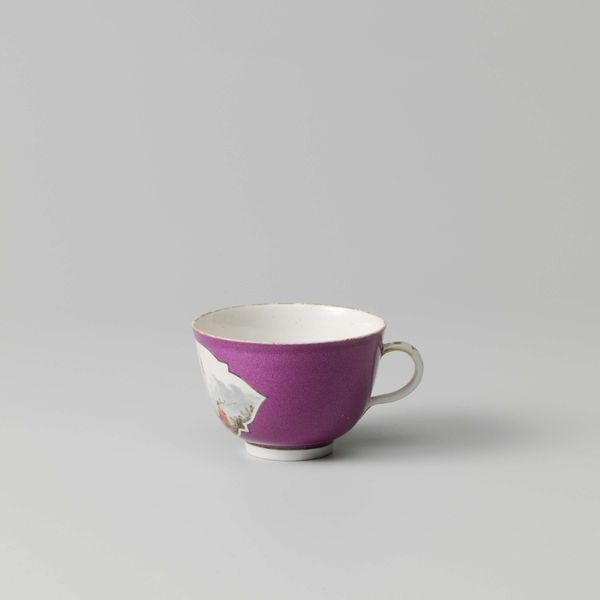
Dimensions: height 5.0 cm, width 10.1 cm, diameter 7.3 cm
Copyright: Rijks Museum: Open Domain
Editor: Here we have an octagonal white cup crafted between 1900 and 2000 by N.V. Haagsche Plateelfabriek Rozenburg, made of ceramic. It's…deceptively simple. Its geometric shape contrasts with the soft, almost comforting presence it has. How do you interpret this work? Curator: I see this seemingly simple cup as a potent artifact, brimming with cultural context. The Art Nouveau style points towards a fascinating moment where artistry sought to permeate everyday life, blurring the lines between high art and functional design. This cup, therefore, becomes more than just a vessel; it's a statement about democratization of art. How do you think it challenges or reinforces notions of gender and class within the decorative arts? Editor: That's a great point. It almost feels like a deliberate attempt to refine a domestic item. Given it was made for domestic use, perhaps it's enforcing certain roles, yet at the same time it could elevate the role of the user. What do you think the fact it’s so basic-looking makes the piece more appealing? Curator: Exactly. And it leads us to contemplate accessibility. While mass production made such objects potentially available to a wider audience, the nuances of design, the quality of materials, would invariably reinstate class distinctions. Think about who could actually afford this cup, or variations of it, and how that might solidify societal norms or hint at social mobility through aesthetic appreciation. Editor: I see what you mean. It's interesting how something so commonplace can reveal so much about social dynamics. Curator: Precisely. Every curve, every choice of material is loaded with meaning. And those meanings shift and evolve depending on who's holding the cup, literally and figuratively. So how does it shift our current norms for gender, class, and economics, given our 21st-century perspective? Editor: I suppose we view craft in a different way now. I’m beginning to see that objects have context based on time, place and perspective, just like art. Curator: Precisely! Considering these diverse contexts enables a richer appreciation, moving past simple aesthetics.
Comments
No comments
Be the first to comment and join the conversation on the ultimate creative platform.
